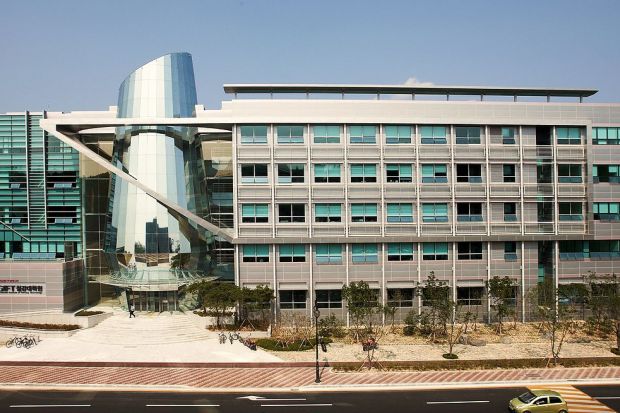POSTECH: Artificial Intestinal Model that Even Mimics the Human Villi
The intestinal epithelium of our body consists of a myriad of elongated villi microarchitectures which increase the total surface area of the inner wall for better absorption of digested nutrients. They also play an important role in intestinal homeostasis and in symbiosis with the intestinal microbiome. In spite of the importance of the villi-like structure, when culturing intestinal epithelial cells in vitro, they form a monolayer – and not a villi-like structure – making it difficult to develop an artificial intestinal model resembling the structure and function of the actual intestine.
To this, a research team at POSTECH has recently developed an innovative culture system that enables intestinal epithelial cells to form a three-dimensional villi microstructure simultaneously on a multi-well insert platform.
Professor Dong Sung Kim and Ph.D. candidates Hyeon Beom Chong and Jaeseung Youn of the Department of Mechanical Engineering at POSTECH collaborated with a research team led by Professor Hyun Jung Kim of University of Texas at Austin to develop a multi-culture system (BASIN1) that can reproduce the three-dimensional villi formation of human intestinal epithelial cells simultaneously. The findings from the study were published as a back-cover paper in Lab on a Chip, a prestigious international academic journal in the field of microfluidics and microTAS, published by the Royal Society of Chemistry in the UK.
Conventional culture platforms, such as organ-on-a-chip and others, have been developed that induce the morphogenesis of intestinal epithelial cells with a three-dimensional villus structure that function similar to that of the actual intestine. However, there are limitations as it is difficult to mass produce these devices due to their complex structures and are difficult to use.
The research team focused to induce simultaneous morphogenesis of intestinal epithelial cells in various specimens and concentrated on developing an in vitro model similar to the actual structure and function of the intestine.
The BASIN developed by the research team is a very simple system consisting of only 24 commercial cell culture inserts, an orbital shaker commonly found in laboratories, and an open basolateral chamber that enables convection formation. By implementing efficient convective flow at the bottom of the insert, the morphogen2 inhibitor of intestinal epithelial cells was removed to induce simultaneous intestinal morphogenesis in 24 commercial cell culture inserts.
As a result, it was confirmed that Caco-23 human intestinal epithelial cells cultured in the BASIN grew in a three-dimensional structure similar to a villus, and exhibited a distribution of cellular properties similar to that of an actual intestinal villus. The practical applicability of the BASIN was verified when it was used to investigate the effect of foreign chemicals on the intestinal epithelium, and to develop a research model for digestive conditions such as leaky gut syndrome.
“We successfully demonstrated simultaneous reproduction of three-dimensional villi formation of intestinal epithelial cells in multiple cell culture inserts, and in particular, have maximized its compatibility with commercial products so that anyone can easily use it,” explained Professor Dong Sung Kim who led the study. He added, “The great potential of the scalability of the in vitro intestinal model that is similar to the structure and function of an in vivo intestine is applicable as a drug evaluation model to develop new drugs.”
This study was conducted with the support from the Mid-Career Researcher Program and the Nano-New Materials Core Technology Development Program of the National Research Foundation of Korea funded by the Ministry of Science and ICT.

